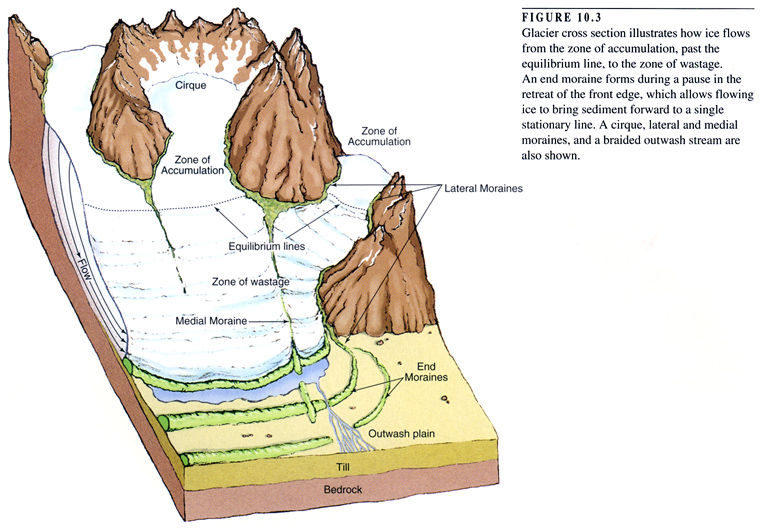Erosional Landforms
Cirque.
An amphitheater-shaped depression high on a mountain,
which either is or was filed with glacial ice. If the ice has melted, the
bottom may conatin a bedrock-basin lake or tarn.
The upper end (headwall) is very steep – erosion by frost
and glacial action causes it to migrate headward with time.
Cirque glaciers are no larger than the cirque.
For many valley glaciers the cirque is simply the head of
the glacier.
Cirque and valley glaciers are types of Alpine Glaciers.
Col
Low point or pass in a ridge caused by the headward
erosion of cirques on opposite sides.
Horn
An isolated high peak formed by the intersection of
three or more cirques.
U-Shaped Valleys
Formed by the glacial re-shaping of
V-shaped stream valleys.
Patternoster Lakes
Weaknesses in bedrock are exploited by the glacier
and depressions are formed, which can become filled with water forming a
lake when the glacier retreats.
They look like a “string of beads” on a map or when viewed from the air.
Arêtes
Sharp, jagged ridges between adjacent glacial valleys.
Hanging Valley
Tributary glaciers cannot erode as deeply as the main
valley glacier. When the ice recedes the tributary is left “hanging” and
a waterfall is usually present.
Roche Mountonnées
Areas where bedrock is more resistant to erosion, it
becomes rounded and smooth.
Fiords
(or Fjords):
Drowned U-shaped valleys.
Erosion by continental glaciers generally smooths and rounds
topography.

